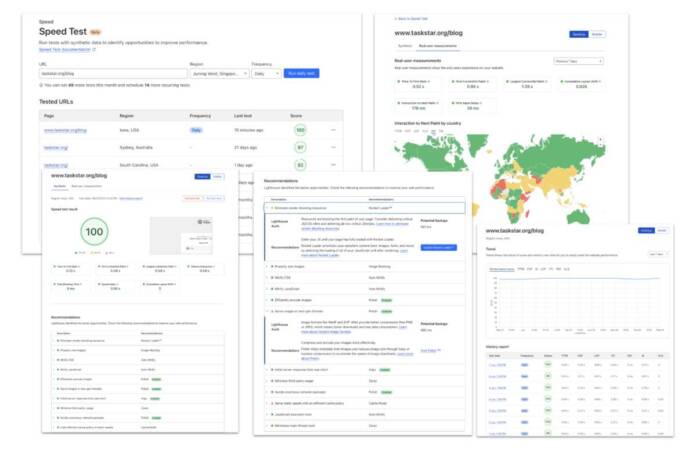There is no doubt that the performance of a website becomes more and more essential for many companies and organizations, so interruptions or worse performance results in a worse experience, leading to situations in which users finally leave without obtaining the information they were looking for or without acquiring a product in which they were interested.
By now we know that there are plenty of online services specializing in website performance measurement, offering broken down results across a number of metrics, but Cloudflare, a network service provider, believes it can do better.
Evolving Website Performance Tracking
In this regard, tomorrow will be the day that it will launch Observatory, its new web observability service, which will replace Speed Tab, to allow the monitoring of user interactions on websites in real time, taking into account metrics such as load and response times, as well as the devices or web browsers through which users access.
For the collection of data in real time, Observatory will make use of JavaScript “beacons”, allowing it to know everything necessary to know if the websites have optimal performance or need improvements that make it easier for users to complete the processes that motivated the visits.
A single panel where you have all the metrics in view
For Cloudflare, Observatory is a “single pane of glass” that allows user experiences to be collected across a variety of situations and network conditions, allowing website managers to have a “holistic” view of performance, and in their case, address the problems encountered through the recommendations received.
John Graham-Cumming, CTO at Cloudflare, told TechCrunch in an email interview that:
Website performance always has a huge impact on user experience, but it’s especially amplified at a time when customers are adjusting their spending due to inflation and rising cost of living. Observatory answers two critical questions: How fast is my website and how can I make it faster? We want to show that users don’t need to be web performance experts to give their visitors an amazing user experience.
Web performance in different parts of the world
Taking into account that performance can be different in one part of the world than in another, Observatory will make use of Google Lighthouse, the open source automated testing tool that allows us to measure the performance of websites in different parts of the world, thus allowing to have the most complete vision possible, and with it the best possible recommendations, which may be accompanied by suggestions for the use of customized configurations of Cloudflare products that allow the problems detected to be corrected.
Observatory will arrive in four pricing plans: free, Pro, Business or Enterprise, which will allow a number of tests to be carried out in a number of regions according to the chosen plan.
Graham-Cumming points out by way of example that:
Professional clients, for example, can set up five recurring tests for their most important page from five different locations.
And in general terms, it points out that:
Almost all competing platforms are overly complicated and have a steep learning curve, either due to the use of outdated technologies or confusing and confusing user interfaces. We designed Observatory to simply and effectively help teams speed up a website for a global audience. We know that there are very few companies with dedicated teams for each individual facet of the business, such as compression, web page optimization, etc. [Pero] Observatory eliminates the learning curve and makes it easier for clients to understand the actual performance of their website
Cloudflare will not only help improve the performance of websites, but it will also enable the boost of many of its other products, a necessary stimulus that, according to TechCrunch, comes in a situation where the company revises its earnings report to the low for the whole year as it did not reach the expected limit.
Image Credit: TechCrunch/Cloudflare













